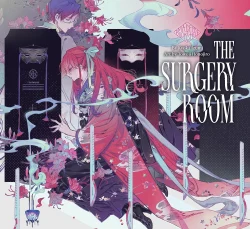
October 23, 2008
Murderer’s Row
A rogue’s gallery of heinous killers reveals the dark soul of a nation
By Metropolis
Originally published on metropolis.co.jp on October 2008

Murder doesn’t happen in a vacuum; the form it takes is shaped by the surrounding society and culture. This was something George Orwell realized when he wrote his 1946 essay “The Decline of the English Murder,” which contrasted the quiet, “genteel,” suburban poisonings of ’30s England with the more violent killings introduced by American GIs during WWII. Likewise, here in Japan, murders are not just incidents that occur in some group of islands near Korea. More often than not, there’s something uniquely, deeply Japanese about them—unwitting expressions of the country’s hidden character, its culture and soul.
So, what do murders reveal about the country? First, the good news: the Japanese resort to the ultimate crime a lot less than most nationalities. Statistics reveal that there are just under five murders per million people per annum. Compare this to the UK, Canada, and Australia with around 15, the USA with 42, and South Africa with 496, and you realize that Japan really is a “safety country”—at least for the vast majority.
The rarity of murder in Japan means that when it does occur, the forces pushing the killer across the threshold of extreme violence are all the more powerful, and the damage to his or her twisted psyche all the more obvious. This gives the killings a character of particular intensity that reveals more about the underlying social pressures and cultural precedents than more random acts in routinely violent countries. Like volcanoes that spew forth the bowels of the earth, the desperate act of the Japanese murderer often discloses much about the country’s deeper nature that many would prefer to remain hidden.

Illustration by Emi Yokoyama
(7 murders, 2008, in custody)
In June, the nation was shocked when 25-year-old Tomohiro Kato drove a truck into a crowded pedestrian crossing in Akihabara, leaped out, and stabbed 12 bystanders. Three of those hit by the truck and four knifing victims died. Because of the neighborhood where the bloodbath occurred and Kato’s lack of success with women, the media were quick to tag this as an otaku killing.
Instead, the incident reflected the intense pressures in Japanese society to succeed and belong. Coming from a well-to-do family—his father was a top manager in a financial institution—Kato had slipped off the elite academic ladder, becoming instead a lowly factory temp. The ensuing sense of failure made it difficult for him to relate to his workmates, leaving him an angry loner with suicidal tendencies, only able to communicate his alienated feelings through blogs.
Seiei Mutou, director of the Tokyo Mental Health Academy and a veteran counselor, said that the Akihabara incident is only the “tip of the iceberg,” because many young men in their 20s and 30s are suffering the consequences of the social and economic changes of the ’80s and ’90s.
“Temporary workers don’t get any solidarity from their coworkers, because they’re treated as disposable staff,” Mutou told The Japan Times. “Parents play less and less of a part in their regional community, so their children grow up not knowing how to interact with people.”

Illustration by Emi Yokoyama
(4 murders, 1988-89, executed June 17, 2008)
Media attempts to label Kato an “otaku killer” were a continuation of a popular storyline that began in 1989, with the arrest and conviction of 27-year old Tsutomu Miyazaki for the torture, sexual abuse and murder of four girls aged 4-7. Partially disabled, with hands that were fused onto his forearms giving them the appearance of claws, Miyazaki lived a twilight existence. He surrounded himself with stacks of manga and 6,000 anime and porn videos, including the notorious “Guinea Pig” series, details of which he incorporated into his depraved acts. He was finally caught in 1989 while molesting a primary school student in a Saitama park.
The otaku narrative is a perennial favorite partly because it strikes a chord in a country where large numbers of young males drop out of a highly pressurized and conformist society to find solace in violent and sexual fantasy, which often makes use of sexualized imagery of children. While the specter of the otaku murderer is for some an indication of Japan’s social disintegration, for others it has become a symbol of a perceived “moral deficit” that, in part, stems from Japan’s traditional tolerance of bizarre and abusive forms of sexuality.
The connection in the popular mind between Kato and Miyazaki was reinforced by the execution of Miyazaki—following 19 years on death row—a mere nine days after Kato’s Akihabara murder spree.

Illustration by Emi Yokoyama
(2 murders, 1997, in custody)
While it’s vital for any society to protect its children, kids are not always as innocent and vulnerable as they might seem. Indeed, they can sometimes be just as violent as adults. In 1997, a 14-year-old Kobe boy, known by his alias Sakakibara (literally “alcohol devil rose”), murdered an 11-year-old boy and left his severed head in front of the gate of a school. While the crime drew forth the usual platitudes about the need for parents to understand their children in a society where familial relationships are often remote, the boy’s murder, along with that of a 10-year-old girl, had elements of fantasist role-playing games: Sakakibara assumed a demonic persona and sent taunting letters to the police. He also seems to have been motivated by pseudo-religious feelings, invoking a god called Bamoidoki in a diary recording his deeds.

Illustration by Emi Yokoyama
(27 murders, 1989–1995, in custody)
The use of religion to justify acts of callous brutality can also be seen in the murders instigated by Shoko Asahara, the leader of the Aum Shinrikyo (Supreme Truth) sect. Born into a large family of poor tatami mat makers in Kumamoto Prefecture, Asahara blended nihilistic aspects of Buddhism with elements of science fiction (e.g., Isaac Asimov’s Foundation novels), as well as anti-Semitic and anti-freemasonry paranoia (long staples of historical interpretation in Japan) to create a ruthless doomsday cult, which had a surprisingly strong attraction for some of Japan’s brightest and best.
The Aum Shinrikyo movement aggressively targeted universities, where it successfully recruited disaffected students. The technical and scientific skills of its members would be put to horrifying use in the sarin gas Tokyo subway attacks of 1995, which killed 12 and injured thousands of others. The group is also known to have killed at least four other people, and is suspected in the murders of many others. The blind obedience and passivity with which cult members obeyed the orders of their evil leader made Aum Shinrikyo a dangerous and formidable group.

Illustration by Emi Yokoyama
(12 murders, 1948, died in prison)
Misplaced trust also features strongly in the murders attributed to Sadamichi Hirasawa. On January 26, 1948, a man claiming to be a public health official arrived at a branch of the Teikoku Bank in Shiinamachi, Tokyo, just before closing time. Brandishing an MD’s business card as credentials, he told the bank staff that he had orders to inoculate them against dysentery. He then gave them a pill and some liquid, which was actually a cyanide solution. As the staff collapsed, the bogus official made off with ¥160,000.
This case is also interesting because of the apparent ambivalence of the legal authorities. After arresting and convicting Hirasawa on less than damning evidence, they repeatedly refused to either execute him or retry him. Hirasawa died of natural causes in a prison hospital in 1987, after almost 40 years in the shadow of the gallows—a testament to the Japanese tendency to brush awkward cases under the rug.

Illustration by Emi Yokoyama
(7 murders, 1997-98, in custody)
The strong connections between people that normally give Japanese society its cohesion and unity also create scope for extremely abusive relationships. In such cases, the situation is often compounded by a reluctance to lose face or wash dirty linen in public. This was certainly the case with the charismatic and sadistic Futoshi Matsunaga and the unfortunate family of his common-law wife, Junko Ogata. Over a two-year period in Kitakyushu, the pair tortured and killed Junko’s parents, sister, brother-in-law and their two children, and were involved in at least one other murder.
In 1997, Junko had temporarily left the abusive Matsunaga, who then targeted her family, threatening to reveal her role in an earlier murder. Even though she returned, he managed to extort ¥63 million from her family and also seduced her married sister Rieko. As the Ogata family increasingly fell under Matsunaga’s dark spell, his sadistic and sexually abusive nature—as well the family’s apparent passivity—knew no bounds.
Over the next few months, he used a stun gun on the genitals of Junko’s mother and 10-year-old niece, and coerced Junko to torture her 61-year-old father to death. He then forced Rieko and her husband Kazuya to strangle Junko’s mother. A few weeks later, Matsunaga commanded Kazuya to strangle his 33-year-old wife. Kazuya was then locked in a bathroom to starve to death. Matsunaga next forced Junko, her 10-year-old daughter Aya, and a teenage girl—whom Matsunaga had persuaded to kill her own father—to kill Rieko’s 5-year-old son. Aya was the next victim. This was apparently the last murder, although Matsunaga continued his abuse until the teenage girl’s escape in 2002 led to the arrest of the evil couple.
While parallels to the sheer brutality in this case can easily be found in other countries, the surprising passivity of the victims and the refusal of neighbors to act on suspicions seems unique to Japan. Similar cases can also be cited, including the prolonged abuse and 1988 murder of the Saitama high school student Junko Furuta by a gang of teenagers, one of whom kept her at his family home until she was murdered and dumped in a tin drum filled with concrete. The sordid details of cases like these also provide material for exploitative B-movies, manga, and even computer games that then feed into the otaku subculture that many sociopaths and dropouts are drawn to.

Illustration by Emi Yokoyama
(1 murder, 1936, pardoned)
While dreary tales of abuse and degradation will continue to find a steady audience, no murder has resonated quite so strongly with the Japanese public as that committed by Sada Abe. The crime provided the inspiration for several well-known movies, including Nagisa Oshima’s internationally acclaimed In the Realm of the Senses and Johnen: Sada no Ai, released earlier this year.
In 1936, Sada, an ex-prostitute who was working as a waitress, murdered Kichizo Ishida, a married man with whom she was having a passionate affair. She then cut off his penis and carried it around with her before being arrested a few days later.
This seems a truly gruesome crime, but the reaction of the public was one of fascination. Following her arrest, Abe was taken to Takanawa police station, where a famous photo shows her smiling, still dressed in her kimono, surrounded by a group of grinning and deferential cops. The police record of her interrogation and confession became a national bestseller, and crowds thronged the courthouse when she was put on trial. Convicted of second degree murder and mutilation of a corpse, Abe was sentenced to six years in prison, but released in 1941, following a pardon from the Emperor. She become a minor celebrity and something of a national treasure.
Although brutal and bloody, the murder was considered by many to be a poetic and beautiful act. The couple had spent a few passionate days together experimenting with erotic asphyxiation, a means of intensifying pleasure at the moment of orgasm by cutting off oxygen to the brain. On the night of the murder, as Ishida slept soundly (having taken a sedative due to throat pains brought on by their sex play), Abe wrapped her obi around his neck once again and, in an attempt to freeze her erotic bliss at its most perfect moment, strangled her lover.
The theme of death at the moment of perfection is one that runs through Japanese culture like a black, unbreakable thread. It underpins the appreciation of cherry blossoms, rings throughout Japanese poetry, and even helped send the kamikaze pilots on their hopeless sorties. In the moment of her lover’s death, Abe had made their love “perfect” while also satisfying a powerful sense of jealousy. “After I had killed Ishida, I felt totally at ease, as though a heavy burden had been lifted from my shoulders,” she told police. “I felt a sense of clarity.”







